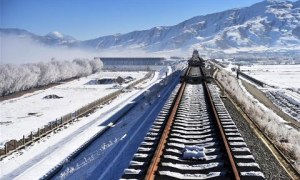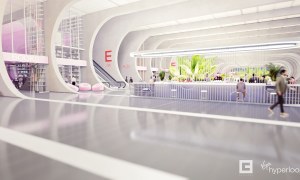🕑 Reading time: 1 minute
A Rubber-tyred metro is a form of rapid transit system that uses a mix of road and rail technology. In this the vehicles have wheels with rubber tyres like a bus, but using a set of two parallel concrete or corrugated steel rollways, each with the width of a tyre. The vehicles have wheels with rubber tyres which run inside a guide way for traction, as well as traditional railway steel wheels with flanges on steel tracks for guidance.

Fig: Bogie from an MP 89 Paris Metro rolling stock
Contents:
History of Rubber Tired Metro
- Rubber-tyred Metros were first invented by the Regie Autonome des Transports Parisiens (RATP)
- Rubber-tyred metro technology was first applied to the Paris Metro, developed by Michelin
- The first completely rubber-tyred metro system was built in Montréal, Canada

Fig: The first ever rubber-tyred Parisian Metro at the Porte-des-Lilas station.
Track and Wheels Schematics of Rubber Tired Metro



Fig: Rubber tyres and guide way of a Montreal Metro train

Fig: NM-73 in Mexico City metro
Advantages of Rubber Tired Metro
- Smooth ride (with little "jostling" around)?
- Faster acceleration
- Shorter braking distances, allowing trains to be signalled closer together
- The ability to climb or descend steeper slopes (~gradient 13%) than would be feasible with conventional rail tracks.
- Quiet ride in open air (for residents and those outside the train)
- Higher energy consumption than steel-on-steel
- A larger quantity of excess heat is generated
- Expensive to build, install and maintain.





